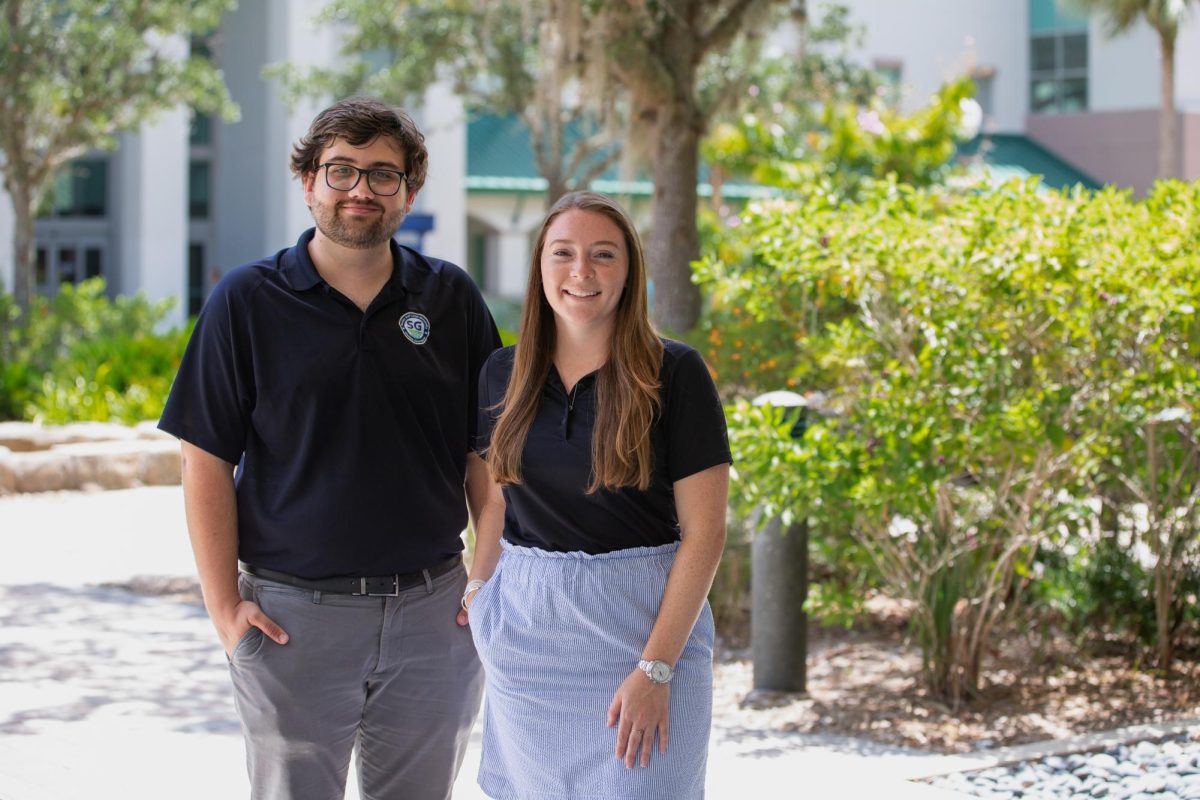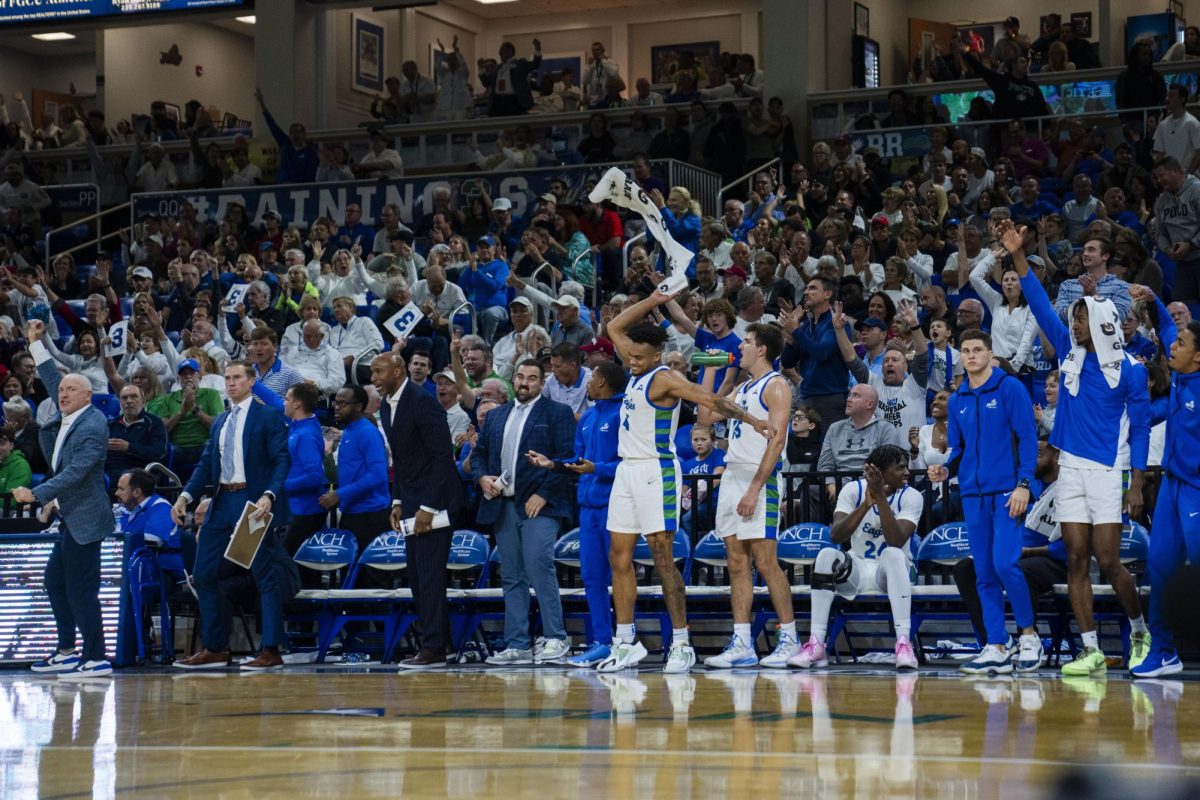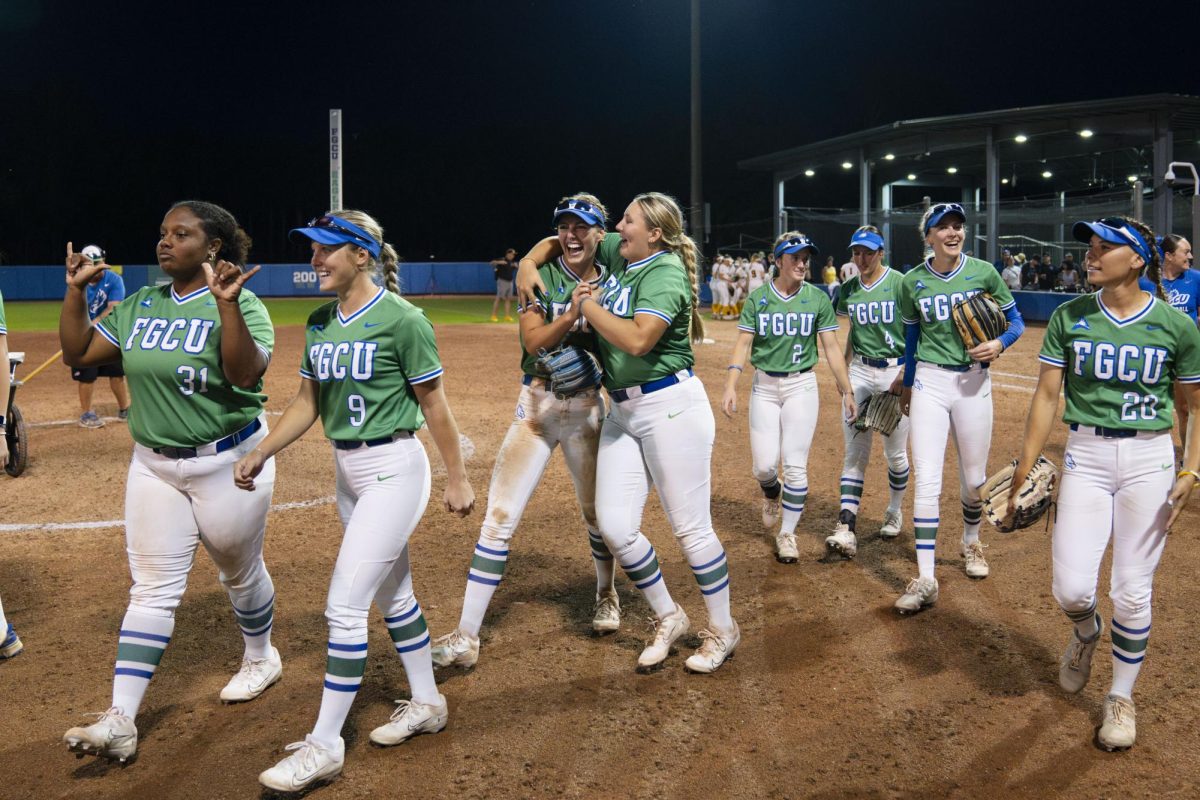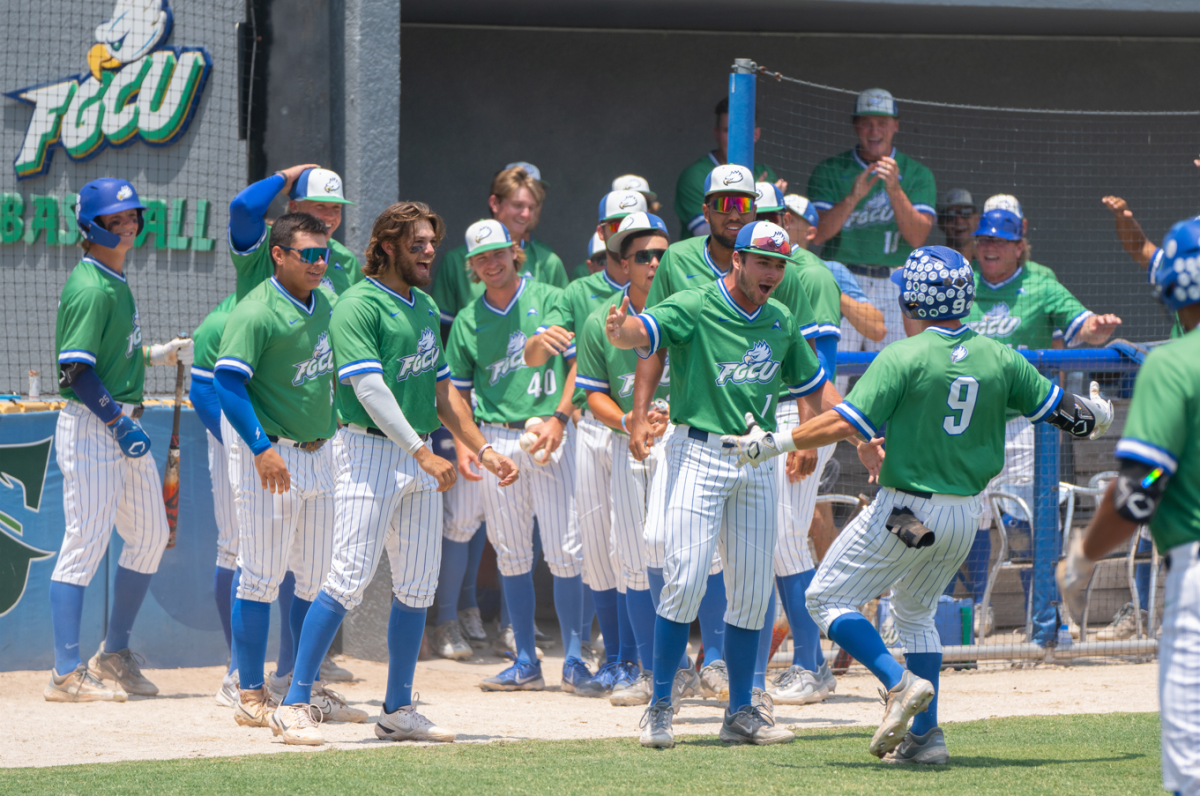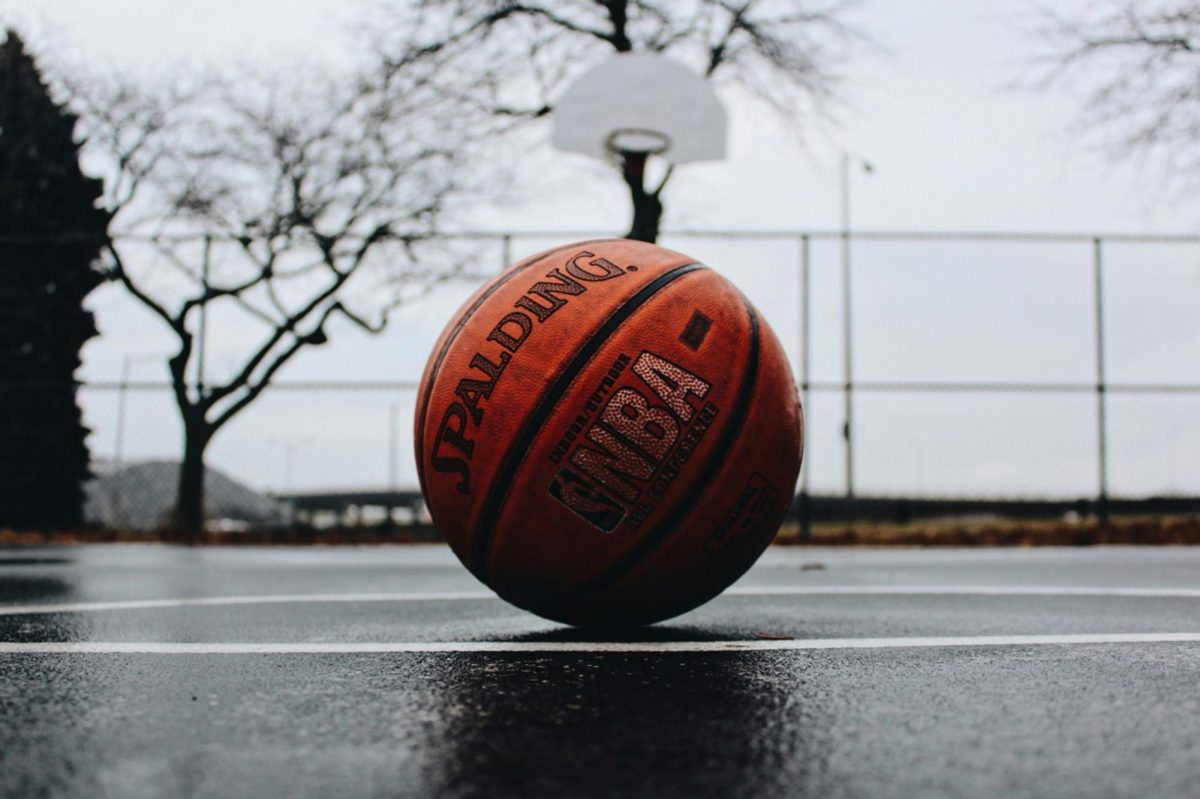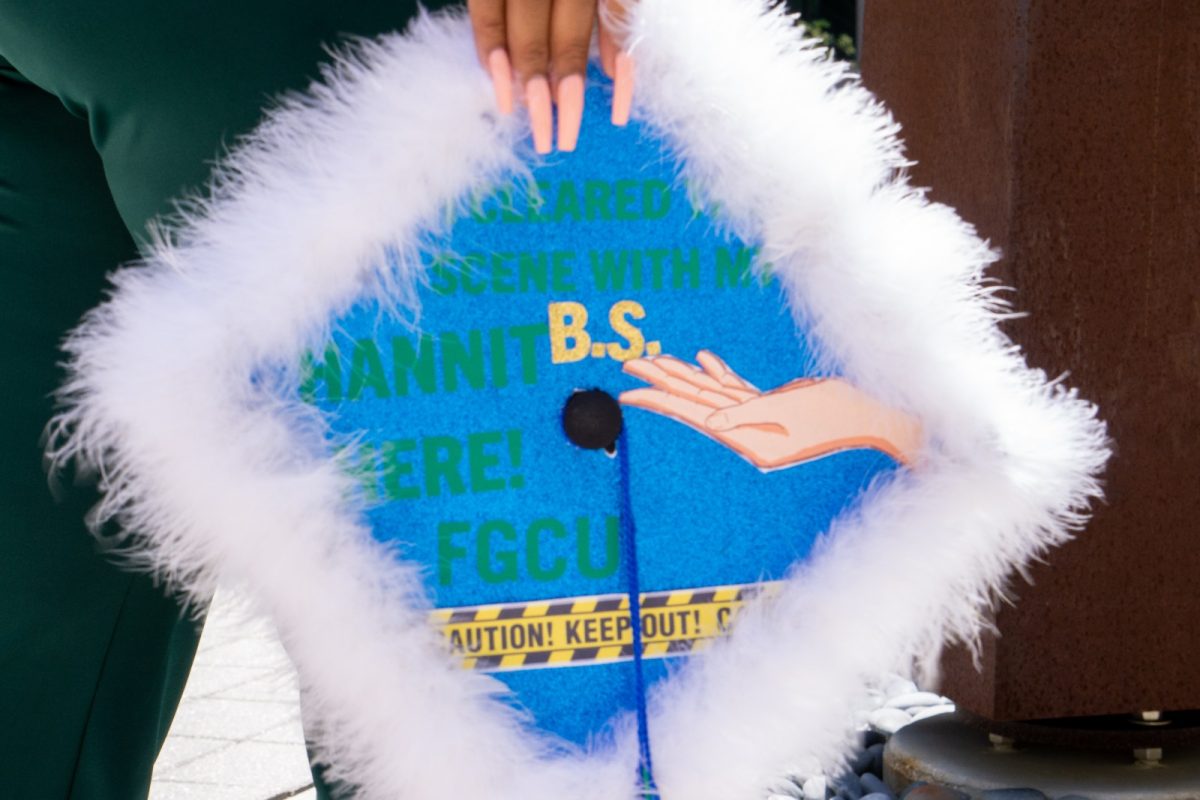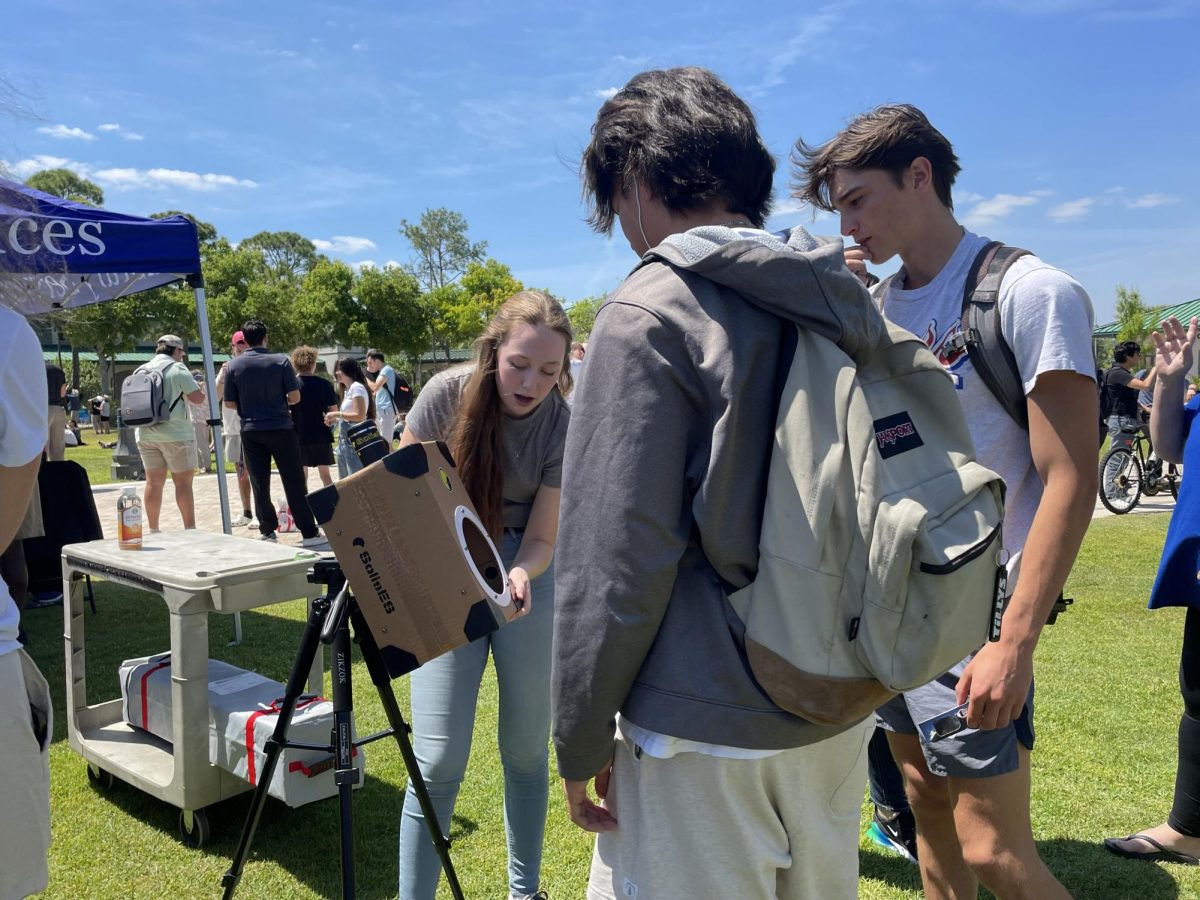Three years ago, social media brought FGCU student Jordan Shedrow and then-20-year-old Paul Hollenback together. Shedrow and Hollenback, who is one of 400 people in the United States with life-threatening Hunter syndrome, became fast friends.
Three months ago, Shedrow pitched an idea to his Foundations of Civic Engagement class that could change Hollenback’s life forever.

“It started out as a simple idea,” Shedrow said. “We wanted to help Paul pay for the rest of his college education and help with medical expenses.”
The simple idea turned into FGCU’s largest student-run 5K. Then, it grew into a multi-award winning Community Engagement project. In about three weeks, the idea will become a nonprofit organization.
Hunter syndrome is an incurable genetic disorder that makes it difficult for the body to break down sugar molecules. It can lead to stunted growth, enlarged internal organs and an enlarged head.
The only FDA-approved medicine to treat Hunter syndrome is Elaprase, a drug that costs $400,000 per year. Shedrow said that ten years ago, before Elaprase was on the market, the average person with Hunter syndrome may have lived until the age of 16.
At 23, Hollenback is one of the oldest living people with Hunter syndrome. Doctors have told him that his dedication to fitness is one of the reasons he is doing so well.
At the age of 18, just one semester into college at Florida SouthWestern University, Hollenback faced a major setback.
“Right after his first semester, he went to the hospital for severe stomach pain,” Shedrow said. “It ended up being appendicitis, and the doctors had to put him under for immediate surgery. While Paul was under for his surgery, they depicted his airway as being too narrow.”
The doctors wanted to put a tube inside Hollenback’s windpipe to help him breathe, but they needed to put him into an induced coma for three-and-a-half weeks to have a company design the tube, also called a trach.
“When he woke up from the coma — the coma medicine is insanely strong — it took a toll on his body and completely wiped his memory clean,” Shedrow said. “In the past three-and-a-half years, he’s been reteaching himself everything he’s ever known, and he’s already back into college.”
Hollenback, now unable to speak and facing decreasing assistance from insurance to pay for medicine, is back at FSW, but is having trouble paying next semester’s tuition.
That’s why, when Shedrow was asked to pitch an idea for 45 seconds to his Civic Engagement class, he spoke about fundraising for Hollenback.
Five juniors joined the project: Craig Connolly, Natalie Diaz, Bridget Miller, Cory Moore and Jessica Zink.
“We heard what Jordan was saying and the dream he had, and I think we just kind of felt inspired altogether,” Moore said. “We started from that day, and I think the next Wednesday we were already working and figuring out what we were going to do, how we were going to do it.”
Course instructor Courtney Satkoski said she was impressed with how quickly the group came together.
“A lot of groups, they can struggle for a few weeks,” Satkoski said. “(What) was also really awesome for this group is they hit the ground running. You had to. To pull off something this big in a semester, you have to go that fast, there’s really not any other option.”
One of the biggest difficulties the group ran into was finding a nonprofit organization they could partner up with, as a requirement of the class. Only four nonprofits for Hunter syndrome exist in the U.S. Ultimately, the group chose to work with the Ohio organization, Help Extinguish Hunter Syndrome.
The team’s goal is to raise $100,000 for Hollenback, to help pay his college tuition and to help him pay the medical expenses to see a specialist in Ohio who could help him get his voice back.
The team’s GoFundMe page had raised $11,945 as of Tuesday, April 19, and Shedrow said overall the team had raised a total of $30,000 toward Hollenback’s education and medical expenses.
Satkoski was surprised to find that many of the donors have been college students.
“It didn’t matter if the donation was for $1 or $5,000; it was that somebody took the time to donate and to write a message,” Satkoski said. “That was probably the neatest part was that they were not only inspiring the community, but they were inspiring fellow students who have limited budgets, to give money.”
The Hunting for a Cure team’s first event was a 5K, which registered more than 100 runners. Shedrow said Campus Reservations told him it was the largest student-run 5K FGCU has ever had.
The team enlisted friends and family to help them run the event, and was surprised to see the number of people who stayed after the race to hear Shedrow speak about Hunter syndrome and see Paul on stage.
“During the awards ceremony, we were able to inform and educate every single person their about Hunter syndrome.,” Shedrow said. “That was probably my favorite part, the teaching process at the end, because everyone was so interested, truly.”
Satkoski was also impressed with the turnout.
“I have hosted 5Ks on this campus, and it’s hard to get people to stay five minutes after a race, especially the legitimate runners who are there for time and speed,” Satkoski said. “They’re looking to get their practice run in, and then, they’re gone. But, they stayed. It was amazing.”
While the group was happy to inform people at the 5K and share Paul’s story, the event also gave them the chance to give back to the community even more. After receiving food and beverage donations from Sun Harvest, Walmart, Fresh Market, Costco, BJs and Miromar, the team was left with 865 pounds of leftover food and beverages. Rather than passing out the food to participants, the Hunting for a Cure team continued with its theme of paying it forward and gave the donations to Interfaith Charities, which has a food pantry in San Carlos.
“We just popped on the phone, called Interfaith, and we’re like, ‘Do you happen to need stuff?’ And, they were like, ‘You have no idea. We are in such desperate need,’ loaded up 865 pounds, and it was there in ten minutes,” Satkoski said.
“That was such a good feeling because it was given to us, so I think it was our job to,” Moore said. “We had the opportunity to give. We were blessed, so now, we had the opportunity to bless other people.”
After the successful 5K, the team reorganized themselves for Community Engagement Day on April 15.
Hollenback wrote a letter to the panel of judges to support the team’s nomination for the Most Engaged Project award. In it, he wrote about why the group was important to him.
“I kept my faith through it all, but there are times that are harder than they may seem,” Hollenback wrote. “You have to keep you faith and love bigger than your fears and be the person you want the world to see. My best friend Jordan really makes life a lot easier for me. I’ve never had anyone in my whole life who’s stood beside me to his capacity because they wanted to be friends rather than just help me … I think Hunting for a Cure is such a beautiful thing.”
The group won four awards, the most of any team that day. The awards varied from people’s choice, to judge’s choice, to a panel choice for the Most Engaged Project award.
Hollenback got to go on stage to accept every award with the team.
“He looked at me after and was like, ‘Do you want to know why today is one of the coolest days?’” Shedrow said. “He goes, ‘I’ve never won anything in my entire life … together we won four things today.’”
A video the group made with local videographer Thomas Irwin has been shared more than 1,600 times, including by retired Hall of Fame quarterback Jim Kelly.
Local organizations and both Bishop Verot and South Fort Myers High School have also gotten involved with fundraising.
Moving forward, the team has filed for 501(c)(3) status to make Hunting for a Cure a nonprofit organization. The process, which usually costs thousands of dollars in legal fees, is being done for free by a law firm in Naples. Shedrow paid $480 out of pocket for remaining fees.
Shedrow hopes the nonprofit will help fund medical research into Hunter syndrome, making it the Southeastern United States’ hub for Hunter syndrome research.
Shedrow also wants to help pay for Hollenback to continue his education at FGCU, to study journalism.
Satkoski is planning to have one of her Integrated Core Senior Capstone courses work entirely on projects related to the nonprofit and will also have some of her future Foundations of Civic Engagement students be involved. Shedrow will be a teaching assistant for the capstone course.
Each of the teammates plans to stay involved with the project past this semester.
“We’ve maintained a really good connection throughout the entire semester, and I don’t think that’s going to go away anytime soon,” Diaz said. “It’s just going to grow each year.”
Miller said one of her big takeaways from the project was Hollenback’s positive attitude.
“He just has such a positive outlook on life,” Miller said. “Seeing he has Hunter syndrome, he’s more positive than half the people I know.”
One of Shedrow’s favorite things about Hollenback is how selfless he is. When Shedrow asked Hollenback several months ago what he would do if he won the $1.5 billion Florida lottery, Hollenback’s typed-out answer surprised him.
“He looks at me with the most sincere look, and he said, ‘Could you imagine all the people I could help with that?’”
Six FGCU students give their all for friend with Hunter syndrome
April 20, 2016
(Top) Runners prepare to race at the Hunting for a Cure 5K. (Bottom of the page) Paul Hollenback participated in the 5K held for him. Jessica Zink, Natalie Diaz, Bridget Miller, Jordan Shedrow, Hollenback, Courtney Satkoski, Craig Connolly and Cory Moore pose with the teams four awards at Community Engagement Day. The “Providing Paul with Opportunity” Go Fund Me page has raised $11,945 so far of the $100,000 goal. (Special to Eagle News)
Story continues below advertisement


